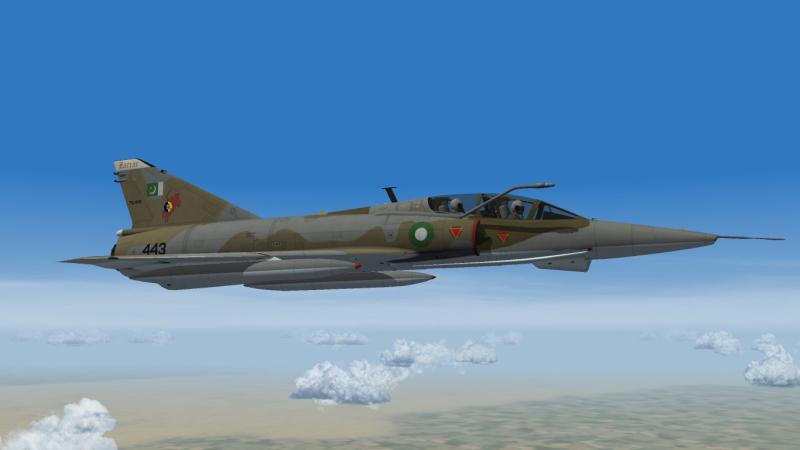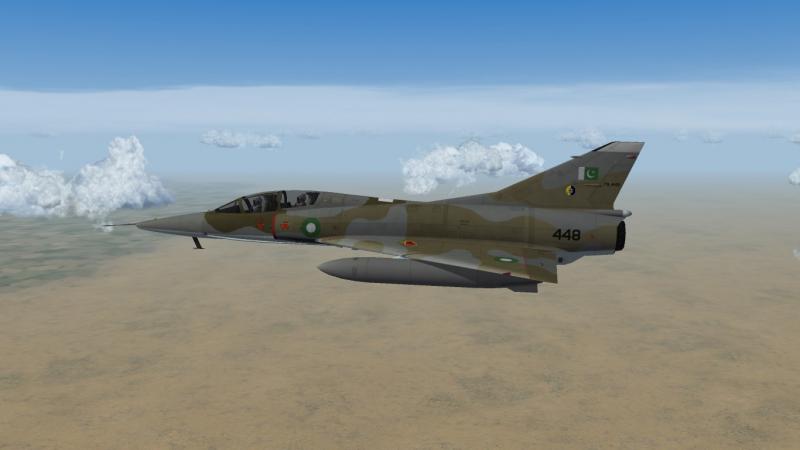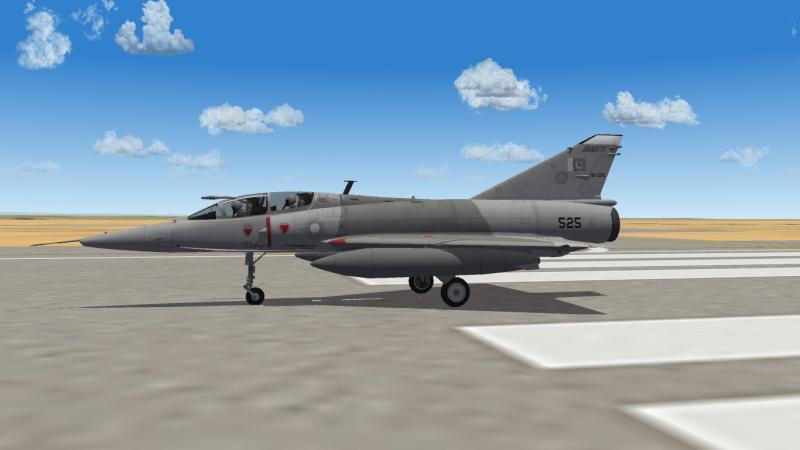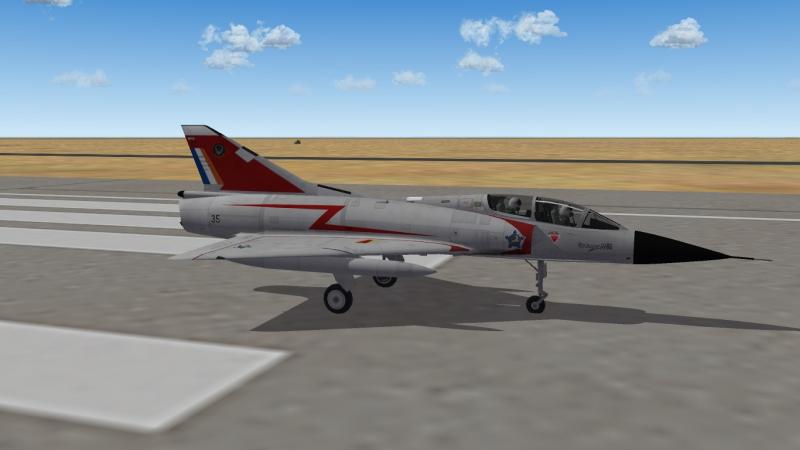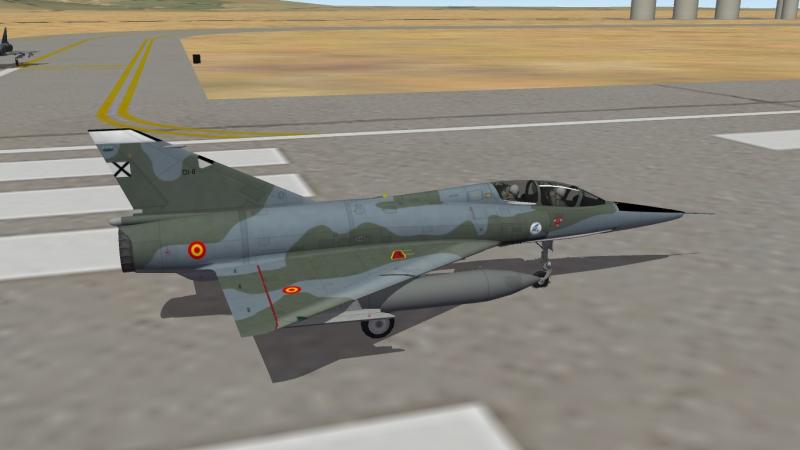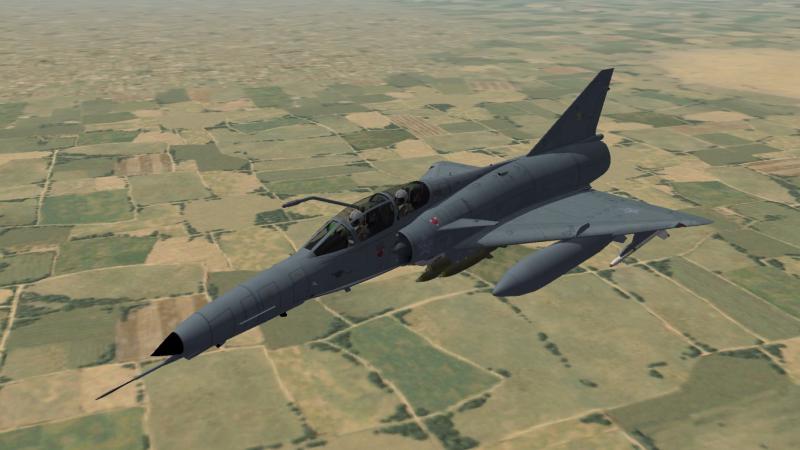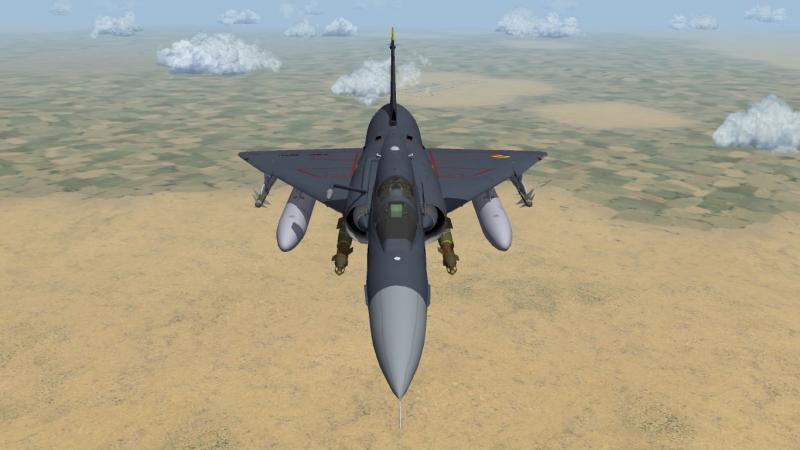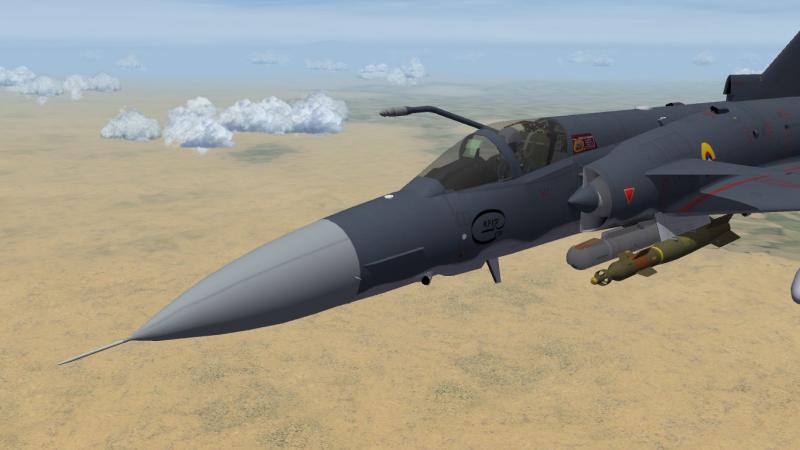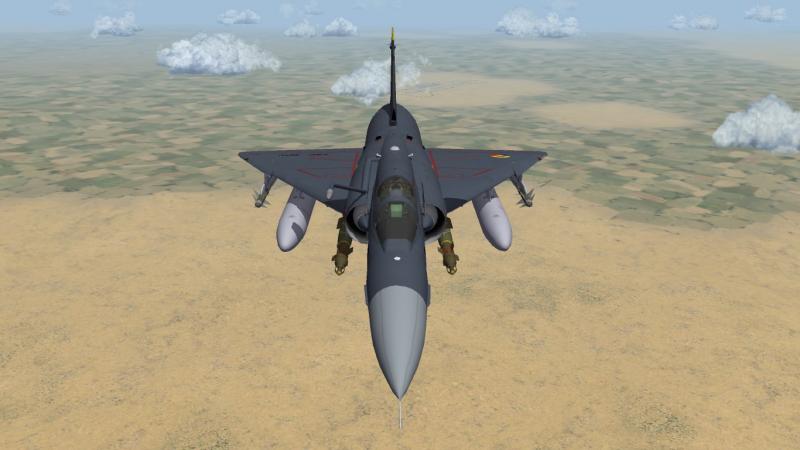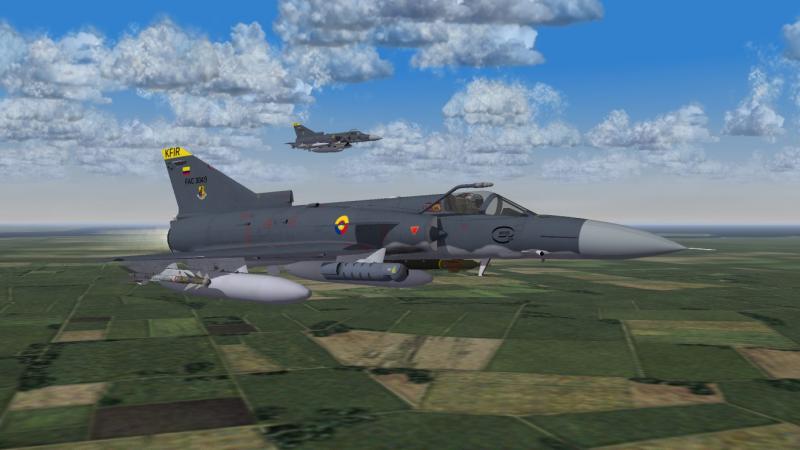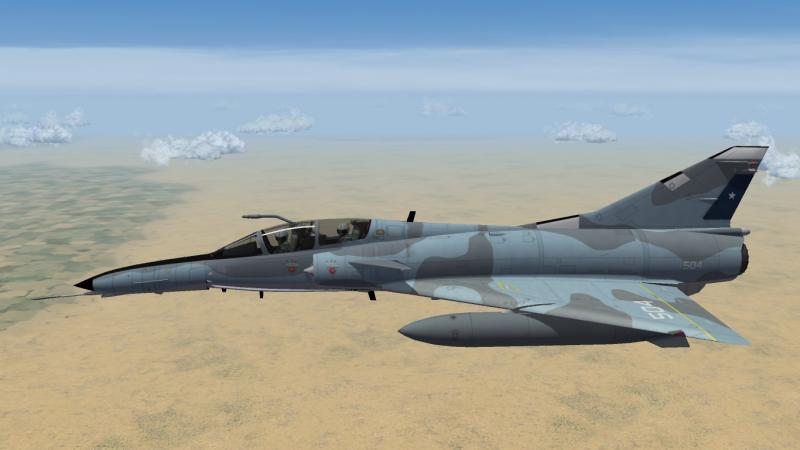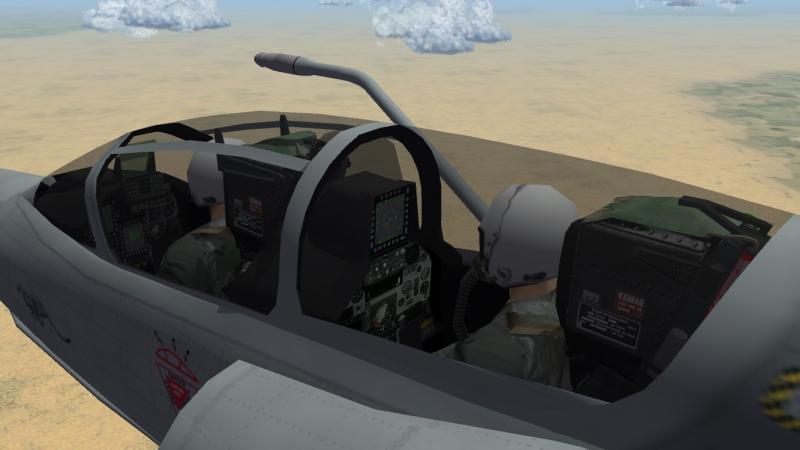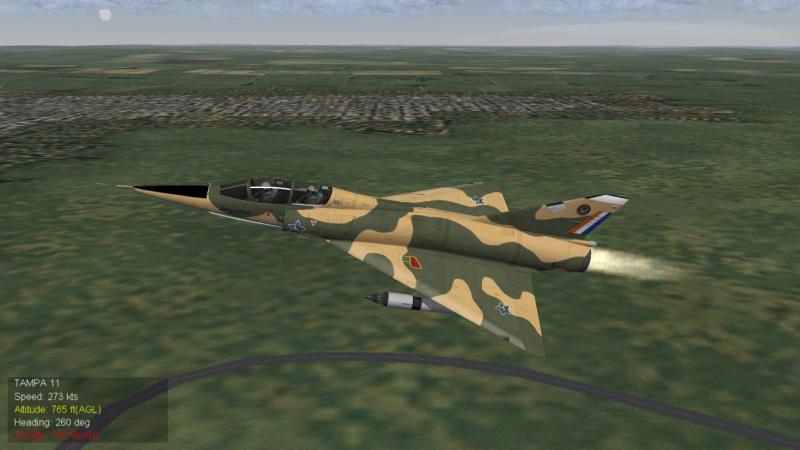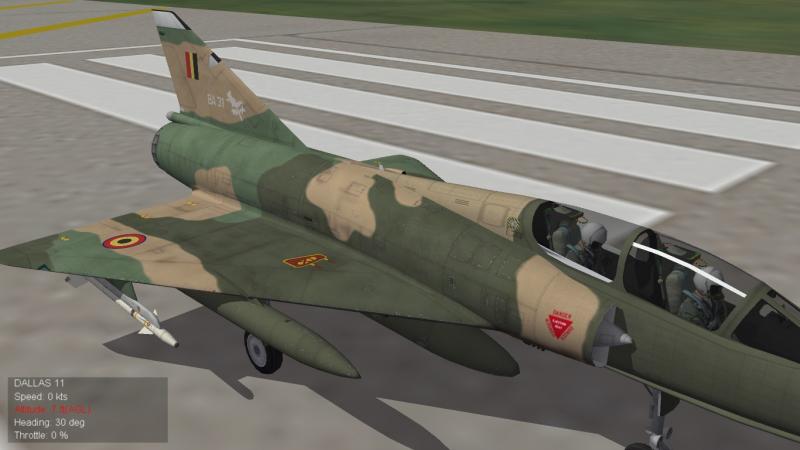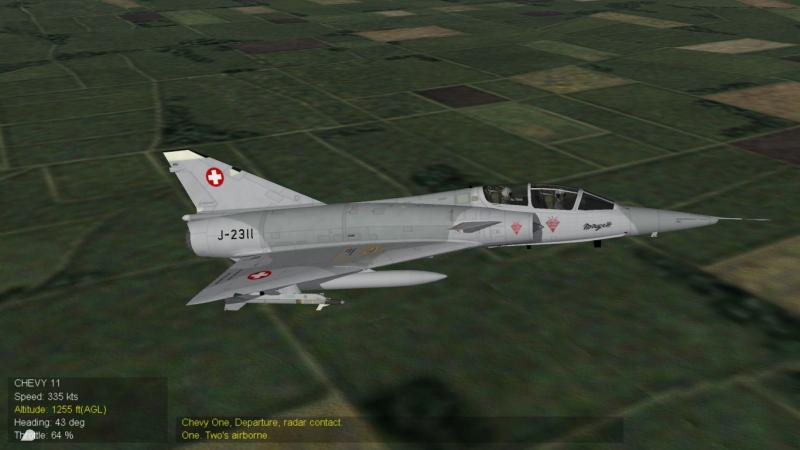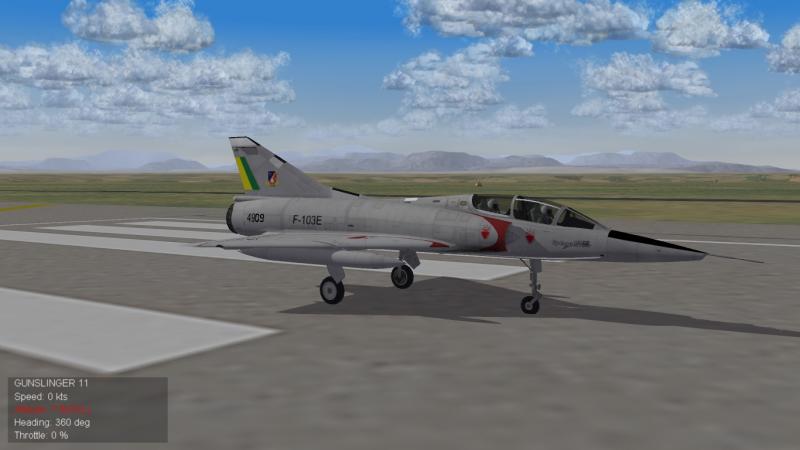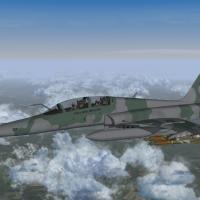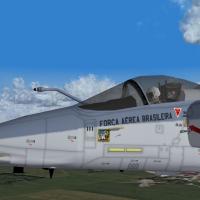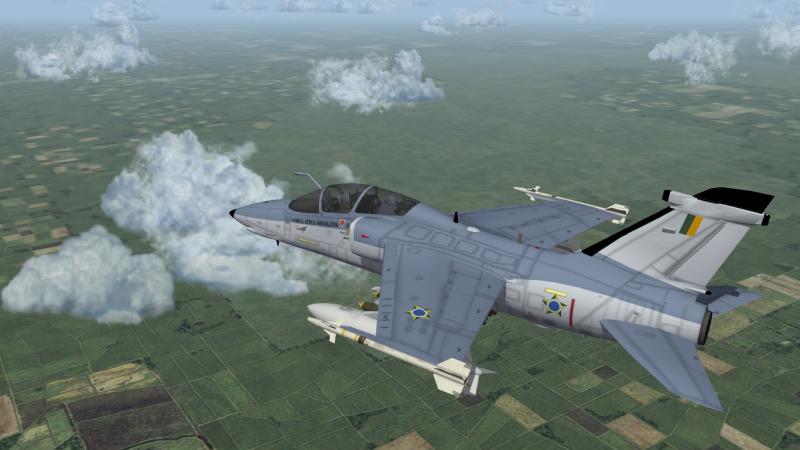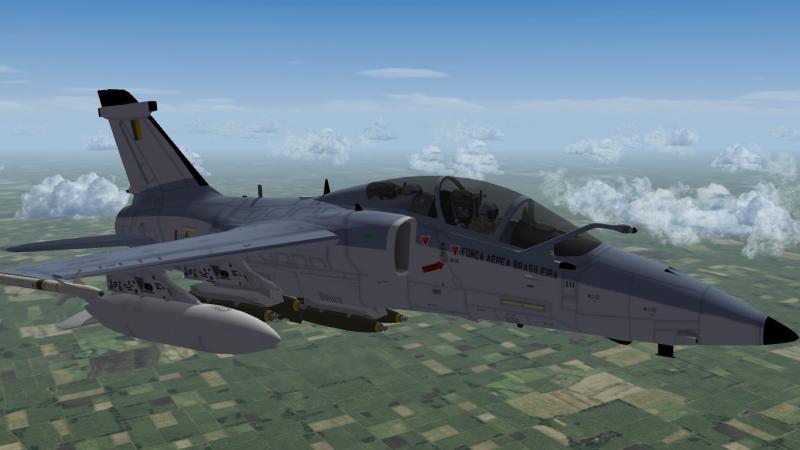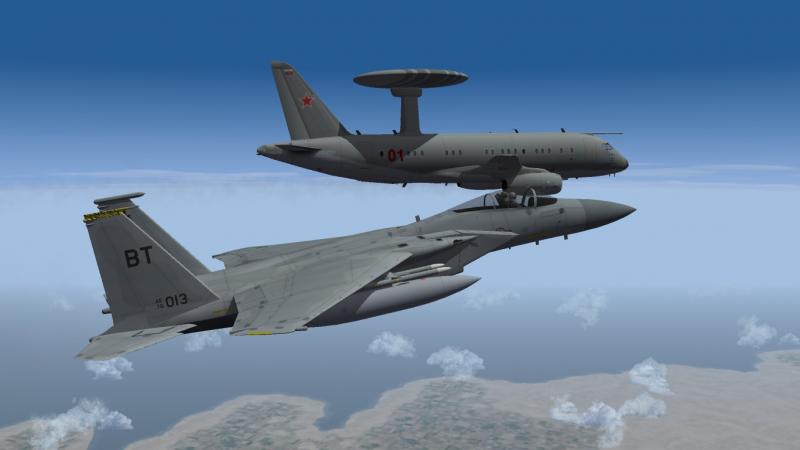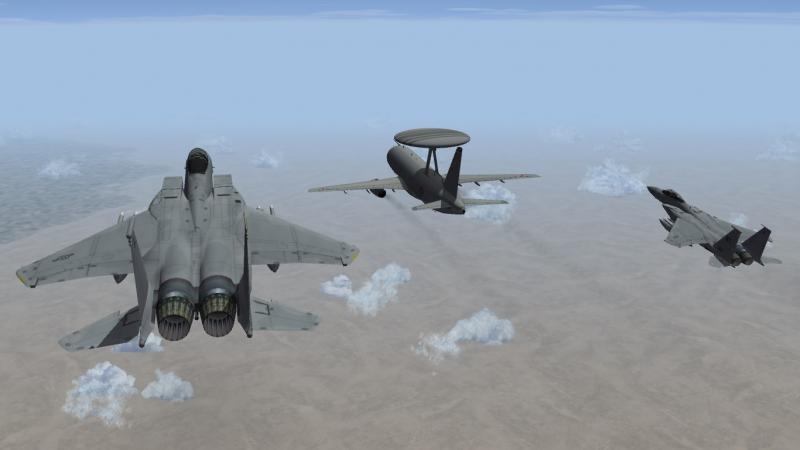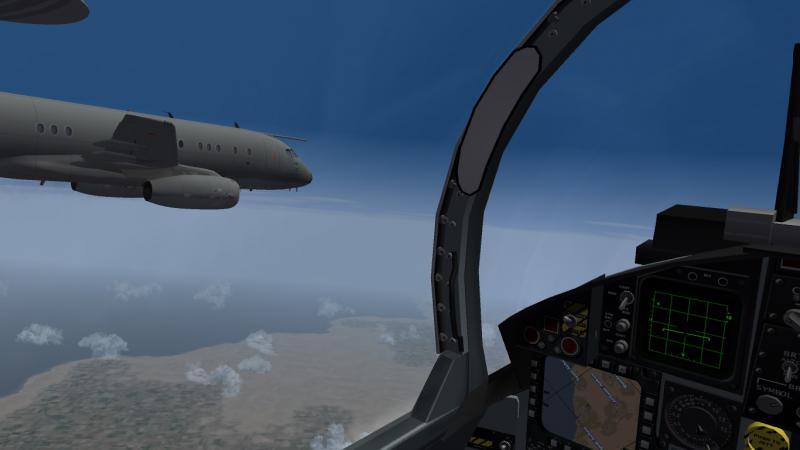-
Posts
583 -
Joined
-
Last visited
-
Days Won
26
Content Type
Profiles
Forums
Gallery
Downloads
Store
Everything posted by denissoliveira
-

Strike Fighters 2 Screenshots
denissoliveira replied to Dave's topic in Thirdwire: Strike Fighters 2 Series - Screen Shots
Mirage IIID2Z Mirage IIIDZ -

Strike Fighters 2 Screenshots
denissoliveira replied to Dave's topic in Thirdwire: Strike Fighters 2 Series - Screen Shots
-

Strike Fighters 2 Screenshots
denissoliveira replied to Dave's topic in Thirdwire: Strike Fighters 2 Series - Screen Shots
-

Strike Fighters 2 Screenshots
denissoliveira replied to Dave's topic in Thirdwire: Strike Fighters 2 Series - Screen Shots
New Update Kfir C-10 and CE download in: http://combatace.com/files/file/13992-kfir-ce-ecuador-air-force/ http://combatace.com/files/file/13516-kfir-c-10-colombia-air-force/ -

Strike Fighters 2 Screenshots
denissoliveira replied to Dave's topic in Thirdwire: Strike Fighters 2 Series - Screen Shots
-

Strike Fighters 2 Screenshots
denissoliveira replied to Dave's topic in Thirdwire: Strike Fighters 2 Series - Screen Shots
-

Strike Fighters 2 Screenshots
denissoliveira replied to Dave's topic in Thirdwire: Strike Fighters 2 Series - Screen Shots
-

Strike Fighters 2 Screenshots
denissoliveira replied to Dave's topic in Thirdwire: Strike Fighters 2 Series - Screen Shots
-

LOD Viewer
denissoliveira replied to mue's topic in Thirdwire: Strike Fighters 2 Series - Mods & Skinning Discussion
This set up this way: D:/simulador de voo/Strike Fighters 2 can not open all Do not open the dlc example mirageIIIO. says: could not load LOD file -

Strike Fighters 2 Screenshots
denissoliveira replied to Dave's topic in Thirdwire: Strike Fighters 2 Series - Screen Shots
-

LOD Viewer
denissoliveira replied to mue's topic in Thirdwire: Strike Fighters 2 Series - Mods & Skinning Discussion
How do you see DLC in lod-viewer -
-

Strike Fighters 2 Screenshots
denissoliveira replied to Dave's topic in Thirdwire: Strike Fighters 2 Series - Screen Shots
F-103D Mirage -
-
View File AMX A-1A, AMX-T A-1B and AMX A-1M Brazilian Air Force The AMX International AMX is a ground-attack aircraft for battlefield interdiction, close air support and reconnaissance missions. It was built until 1999 by AMX International, an Italian-Brazilian joint venture. The AMX is designated A-1 by the Brazilian Air Force, and A-11 Ghibli by the Italian Air Force. The AMX is capable of operating at high subsonic speed and low altitude, by day or night, and if necessary, from bases with poorly equipped or damaged runways. Low IR signature and reduced radar equivalent cross-section help prevent detection, while low vulnerability of structure and systems aid survivability, while integrated ECM, air-to-air missiles and nose-mounted guns provide self-defence capabilities. AMX-T In 1986, development of a two-seat advanced trainer variant was undertaken. This was intended to provide trainee pilots with experience on fast jets, while still retaining the single-seater's attack capabilities. First flying in 1990, the AMX-T equipped both the Italian and Brazilian air forces. A-1M The product of a Brazilian upgrade program of their A-1s; significant features include a Mectron SCP-01 Scipio radar, Embraer BR2 data link, FLIR Systems navigation equipment, Elbit INS/GPS/databus, the adoption of a glass cockpit,[31] a new OBOGS system and HMD DASH IV. O AMX International AMX, ou simplesmente AMX é um avião de ataque ar-superfície usado para missões de interdição, apoio aéreo aproximado e reconhecimento aéreo. Foi desenvolvido pelo consórcio internacional AMX Internacional. Na Força Aérea Brasileira, ele é designado A-1 (A-1A para a versão monoplace e A-1B para a versão de dois lugares). Com a modernização o A-1 passa a incorporar o M em sua designação na FAB, tornando-se então A-1M. Na Itália, ele tem o apelido de "Ghibli". O AMX é capaz de operar em altas velocidades subsônicas a baixa altitude, tanto de dia quanto de noite, e se necessário, a partir de bases pouco equipadas ou com pistas danificadas. O caça conta com relativamente baixa assinatura em infravermelho e reduzida secção frontal ao radar, para melhorar seu percentual de sucesso nas missões. A auto-defesa é proporcionada por mísseis ar-ar, canhões integrados e sistemas de contramedidas eletrônicas including: Two versions of skin Two fictitious skins (A-1M) Three models: AMX-1A AMX-T A1B AMX-1M Model By Rafael Rodrigues Texture By Denis Oliveira Submitter denissoliveira Submitted 03/23/2015 Category Other Origin
-
View File F-5F and F-5FM Brazilian Air Force The Northrop F-5A/B Freedom Fighter and the F-5E/F Tiger II are part of a family of supersonic Light fighter, initially designed in the late 1950s by Northrop Corporation. Being smaller and simpler than contemporaries such as the McDonnell Douglas F-4 Phantom II, the F-5 cost less to both procure and operate, making it a popular export aircraft. The F-5 started life as a privately funded light fighter program by Northrop in the 1950s. The design team wrapped a small, highly aerodynamic fighter around two compact and high-thrust General Electric J85 engines, focusing on performance and low cost of maintenance. Though primarily designed for the day air superiority role, the aircraft is also a capable ground-attack platform. The F-5A entered service in the early 1960s. During the Cold War, over 800 were produced through 1972 for U.S. allies. Though the USAF had no acknowledged need for a light fighter, it did procure roughly 1,200 Northrop T-38 Talon trainer aircraft, which were directly based on the F-5A. After winning the International Fighter Aircraft competition in 1970, a program aimed at providing effective low-cost fighters to American allies, Northrop introduced the second-generation F-5E Tiger II in 1972. This upgrade included more powerful engines, higher fuel capacity, greater wing area and improved leading edge extensions for a better turn rate, optional air-to-air refueling, and improved avionics including air-to-air radar. Primarily used by American allies, it was also used in US training exercises. A total of 1,400 Tiger IIs were built before production ended in 1987. More than 3,800 F-5 and T-38 aircraft were produced in Hawthorne, California. The F-5 was also developed into a dedicated reconnaissance version, the RF-5 Tigereye. The F-5 also served as a starting point for a series of design studies which resulted in the Northrop YF-17 and the F/A-18 navalized fighter aircraft. The Northrop F-20 Tigershark was an advanced variant to succeed the F-5E which was ultimately canceled when export customers did not emerge. The F-5N/F variants are in service with the United States Navy and United States Marine Corps as an adversary trainer. Approximately 500 aircraft are still in service as of 2014. In October 1974, the Brazilian Air Force (FAB) ordered 36 F-5E and 6 F-5B aircraft from Northrop for $72 million. The first three aircraft arrived on 12 March 1975. In 1988, FAB acquired 22 F-5E and four F-5EF second-hand USAF "agressor" fighters. A total of 15 of these aircraft were part of the initial batch of 30 aircraft produced by Northrop. In 1990, FAB retired all remaining five F-5Bs; later, they were sent to Brazilian museums around the country. In 2001, Elbit Systems and Embraer started work on a $230 million Brazilian F-5 modernization program, performed over an eight-year period, upgrading 46 F-5E/F aircraft, re-designated as F-5EM and F-5FM. The modernization centered on several areas: new electronic warfare systems, the Grifo F radar, an air-to-air refueling system, INS/GPS-based navigation, support for new weapons, targeting and self-defense systems, HOTAS, LCD displays, helmet-mounted displays (HMDs), Radar Warning Receiver, encrypted communications, cockpit compatibility for night vision goggles, On-Board Oxygen Generation System (OBOGS) and various new onboard computer upgrades. One important capability is the secure communication with R-99 airborne early warning platforms and ground stations. Externally, the new aircraft features a larger nose cone that accommodates the larger radar equipment. The first F-5EM was handed over on 21 September 2005. On 7 July 2003, four Rafael Litening III targeting pods were ordered at a cost of USD 13 million, to be used on F-5M together with three Rafael Sky Shield jamming pods ordered in 5 July 2006 at a cost of USD 42 million. In 2009, FAB bought eight single-seat and three twin-seat F-5F used aircraft from Jordan in a US$21 million deal. These aircraft were built between 1975 and 1980. On 14 April 2011, a contract of $153 million was signed with Embraer and Elbit to modernize the additional F-5s bought from Jordan, and to supply one more flight simulator as a continuation of the contract signed in 2000. These F-5s will receive the same configuration as those from the initial 46 F-5s currently completing the upgrade process. The first delivery of this second batch of upgraded jet fighters is scheduled for 2013 with expected use to 2030. - FastCargo – 3D modelling - F/A-18A Cockpit-Brain32 - F/A-18A Avionics-Crusader e CrazyhorseB34 - Sophocles for his superb cockpit work. Every switch is a work of art. - 3D mod - Denis Oliveira - Decals - Denis Oliveira - Texture - Denis Oliveira Submitter denissoliveira Submitted 03/23/2015 Category F-5
-
- 1
-

-
689 downloads
The Northrop F-5A/B Freedom Fighter and the F-5E/F Tiger II are part of a family of supersonic Light fighter, initially designed in the late 1950s by Northrop Corporation. Being smaller and simpler than contemporaries such as the McDonnell Douglas F-4 Phantom II, the F-5 cost less to both procure and operate, making it a popular export aircraft. The F-5 started life as a privately funded light fighter program by Northrop in the 1950s. The design team wrapped a small, highly aerodynamic fighter around two compact and high-thrust General Electric J85 engines, focusing on performance and low cost of maintenance. Though primarily designed for the day air superiority role, the aircraft is also a capable ground-attack platform. The F-5A entered service in the early 1960s. During the Cold War, over 800 were produced through 1972 for U.S. allies. Though the USAF had no acknowledged need for a light fighter, it did procure roughly 1,200 Northrop T-38 Talon trainer aircraft, which were directly based on the F-5A. After winning the International Fighter Aircraft competition in 1970, a program aimed at providing effective low-cost fighters to American allies, Northrop introduced the second-generation F-5E Tiger II in 1972. This upgrade included more powerful engines, higher fuel capacity, greater wing area and improved leading edge extensions for a better turn rate, optional air-to-air refueling, and improved avionics including air-to-air radar. Primarily used by American allies, it was also used in US training exercises. A total of 1,400 Tiger IIs were built before production ended in 1987. More than 3,800 F-5 and T-38 aircraft were produced in Hawthorne, California. The F-5 was also developed into a dedicated reconnaissance version, the RF-5 Tigereye. The F-5 also served as a starting point for a series of design studies which resulted in the Northrop YF-17 and the F/A-18 navalized fighter aircraft. The Northrop F-20 Tigershark was an advanced variant to succeed the F-5E which was ultimately canceled when export customers did not emerge. The F-5N/F variants are in service with the United States Navy and United States Marine Corps as an adversary trainer. Approximately 500 aircraft are still in service as of 2014. In October 1974, the Brazilian Air Force (FAB) ordered 36 F-5E and 6 F-5B aircraft from Northrop for $72 million. The first three aircraft arrived on 12 March 1975. In 1988, FAB acquired 22 F-5E and four F-5EF second-hand USAF "agressor" fighters. A total of 15 of these aircraft were part of the initial batch of 30 aircraft produced by Northrop. In 1990, FAB retired all remaining five F-5Bs; later, they were sent to Brazilian museums around the country. In 2001, Elbit Systems and Embraer started work on a $230 million Brazilian F-5 modernization program, performed over an eight-year period, upgrading 46 F-5E/F aircraft, re-designated as F-5EM and F-5FM. The modernization centered on several areas: new electronic warfare systems, the Grifo F radar, an air-to-air refueling system, INS/GPS-based navigation, support for new weapons, targeting and self-defense systems, HOTAS, LCD displays, helmet-mounted displays (HMDs), Radar Warning Receiver, encrypted communications, cockpit compatibility for night vision goggles, On-Board Oxygen Generation System (OBOGS) and various new onboard computer upgrades. One important capability is the secure communication with R-99 airborne early warning platforms and ground stations. Externally, the new aircraft features a larger nose cone that accommodates the larger radar equipment. The first F-5EM was handed over on 21 September 2005. On 7 July 2003, four Rafael Litening III targeting pods were ordered at a cost of USD 13 million, to be used on F-5M together with three Rafael Sky Shield jamming pods ordered in 5 July 2006 at a cost of USD 42 million. In 2009, FAB bought eight single-seat and three twin-seat F-5F used aircraft from Jordan in a US$21 million deal. These aircraft were built between 1975 and 1980. On 14 April 2011, a contract of $153 million was signed with Embraer and Elbit to modernize the additional F-5s bought from Jordan, and to supply one more flight simulator as a continuation of the contract signed in 2000. These F-5s will receive the same configuration as those from the initial 46 F-5s currently completing the upgrade process. The first delivery of this second batch of upgraded jet fighters is scheduled for 2013 with expected use to 2030. - FastCargo – 3D modelling - F/A-18A Cockpit-Brain32 - F/A-18A Avionics-Crusader e CrazyhorseB34 - Sophocles for his superb cockpit work. Every switch is a work of art. - 3D mod - Denis Oliveira - Decals - Denis Oliveira - Texture - Denis Oliveira -
Version v3.0
1,116 downloads
The AMX International AMX is a ground-attack aircraft for battlefield interdiction, close air support and reconnaissance missions. It was built until 1999 by AMX International, an Italian-Brazilian joint venture. The AMX is designated A-1 by the Brazilian Air Force, and A-11 Ghibli by the Italian Air Force. The AMX is capable of operating at high subsonic speed and low altitude, by day or night, and if necessary, from bases with poorly equipped or damaged runways. Low IR signature and reduced radar equivalent cross-section help prevent detection, while low vulnerability of structure and systems aid survivability, while integrated ECM, air-to-air missiles and nose-mounted guns provide self-defence capabilities. AMX-T In 1986, development of a two-seat advanced trainer variant was undertaken. This was intended to provide trainee pilots with experience on fast jets, while still retaining the single-seater's attack capabilities. First flying in 1990, the AMX-T equipped both the Italian and Brazilian air forces. A-1M The product of a Brazilian upgrade program of their A-1s; significant features include a Mectron SCP-01 Scipio radar, Embraer BR2 data link, FLIR Systems navigation equipment, Elbit INS/GPS/databus, the adoption of a glass cockpit,[31] a new OBOGS system and HMD DASH IV. O AMX International AMX, ou simplesmente AMX é um avião de ataque ar-superfície usado para missões de interdição, apoio aéreo aproximado e reconhecimento aéreo. Foi desenvolvido pelo consórcio internacional AMX Internacional. Na Força Aérea Brasileira, ele é designado A-1 (A-1A para a versão monoplace e A-1B para a versão de dois lugares). Com a modernização o A-1 passa a incorporar o M em sua designação na FAB, tornando-se então A-1M. Na Itália, ele tem o apelido de "Ghibli". O AMX é capaz de operar em altas velocidades subsônicas a baixa altitude, tanto de dia quanto de noite, e se necessário, a partir de bases pouco equipadas ou com pistas danificadas. O caça conta com relativamente baixa assinatura em infravermelho e reduzida secção frontal ao radar, para melhorar seu percentual de sucesso nas missões. A auto-defesa é proporcionada por mísseis ar-ar, canhões integrados e sistemas de contramedidas eletrônicas including: Two versions of skin Two fictitious skins (A-1M) Three models: AMX-1A AMX-T A1B AMX-1M Model By Rafael Rodrigues Texture By Denis Oliveira -

Strike Fighters 2 Screenshots
denissoliveira replied to Dave's topic in Thirdwire: Strike Fighters 2 Series - Screen Shots
-

Strike Fighters 2 Screenshots
denissoliveira replied to Dave's topic in Thirdwire: Strike Fighters 2 Series - Screen Shots
-
View File Super Mirage F1AZ Super Mirage F1AZ After the war, plans were made to upgrade the Mirage F1 fleet by replacing the Snecma Atar 09K50 engine with the SMR95 engine which was based on the Klimov RD-33, and the integration of the Russian R-73 air-to-air missile. Fittingly the project aircraft for this was once again Mirage F1-AZ '216'. Mirage '216' became known as 'Super Mirage F1'. Echoing events of 1973 with the Mirage M53, sadly this project came to an end when after 22 years of service the SAAF withdrew the Mirage F1-AZ from service on the 25th November 1997. Thus ending the SAAF’s 35 year association with Mirage aircraft. Another project involved fitting an advanced avionics suite to Mirage F1-AZ '235', this system was introduced to the Spanish AF Mirage F1’s. Mirage '235' was given the unique white and arctic blue scheme, earning it the nickname as the worlds fastest dairy cart. After 22 years of service, only eight Mirage F1-AZ’s were lost, one due to enemy action. Crédits : - Aircraft : BPAO, Flying.toaster and Centurion-1. - Cockpit : Brain32 and Centurion-1 - Skins : Ludo.m54. - Decals : Ludo.m54. - Templates : Brain32, ACE888 and Ludo.m54. - Avionics and data tweaks : Crusader. - FM : Baffmeister. - Interception light : Coupi - Missiles, rocket pods and seat : Ravenclaw_007. - Weapons : The Mirage Factory. - Hangars et loading screens : Denis Oliveira. - UpdateSkin: Denis Oliveira. - Cockpit and Avioncs update: Coupi. - 3D mod: Denis Oliveira. - New Engine DATA: Denis Oliveira. Submitter denissoliveira Submitted 02/26/2015 Category Mirage F1

.jpg.cb79b9aaa9e57802407b73797e1cc560.jpg)
